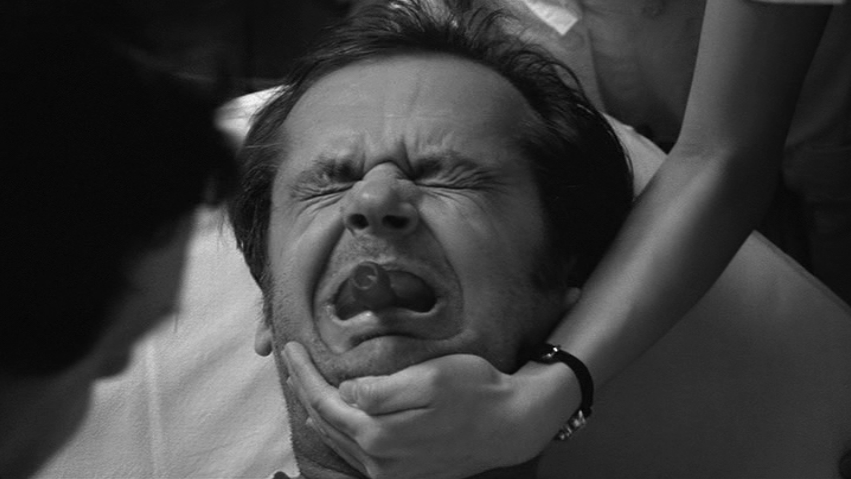Revisiting Electroconvulsive Therapy - Part 4
/I hope that this post encourages those that are suffering, and those caring for loved ones, to research these different treatments.
Read MoreI hope that this post encourages those that are suffering, and those caring for loved ones, to research these different treatments.
Read MoreWhile I’ve never been one to dance with a zest for life, I’m feeling the itch to tap my feet.
Read MoreI’m deliberately subjecting myself to electric shocks to reboot my brain because standard medication treatments have not been effective enough.
Read MoreI hope that this post encourages those that are suffering, and those caring for loved ones, to research these different treatments.
Read MoreBefore this treatment, when I woke up I had to motivate myself just to swing my legs out from under the covers.
Read MoreI screwed up leaving the residential treatment facility early.
Read MoreECT was first used in 1938 when an Italian psychiatrist, Ugo Cerletti, observed pigs in a Rome slaughterhouse being anesthetized with electroshock before being butchered. His first human patient begged Cerletti, “Non una seconda! Mortifierel” (“Not another one! It will kill me!”).
When people think about electroconvulsive therapy, an image of someone strapped to a table with electrodes on their temples comes to mind. Just like the image on the left of Jack Nicholson’s character, Randle Patrick McMurphy, from One Flew Over the Cuckoo’s Nest. But really, the image on the right more accurately shows what neurostimulation is today.

Nicholson

Corsetti
Wait, what’s the difference between neurostimulation, electroconvulsive therapy, and electroshock therapy? Mainly, the words used.
Electroconvulsive therapy (ECT), formerly known as electroshock therapy, and often referred to as shock treatment, is a psychiatric treatment in which seizures are electrically induced in patients to provide relief from mental disorders.[1] The ECT procedure was first conducted in 1938[2] and is the only currently used form of shock therapy in psychiatry. ECT is often used with informed consent[3] as a last line of intervention for major depressive disorder, mania, and catatonia.[4]
https://en.wikipedia.org/wiki/Electroconvulsive_therapy
I kind of like the term electroshock therapy. Makes me feel like more of a badass strapping my electrodes on in the morning. But, it sounds scary so electroconvulsive therapy became the term du jour.
Now we’re onto neurostimulation, which, to be fair, covers more than running an electric current through a patient’s brain.

Neurostimulation is the purposeful modulation of the nervous system's activity using invasive (e.g. microelectrodes) or non-invasive means (e.g. transcranial magnetic stimulation or transcranial electric stimulation, tES, such as tDCS or transcranial alternating current stimulation, tACS). Neurostimulation usually refers to the electromagnetic approaches to neuromodulation.
https://en.wikipedia.org/wiki/Neurostimulation
Make no mistake, I am shocking my brain with electricity. Not with 180-460 volts, but with 0.5-2.0 milliamps. That’s 0.00000434782% the maximal voltage for ECT. Prevention, as it turns out, is often less severe than the cure.
And ECT isn’t necessarily a cure! We still don’t know exactly why creating a strong electric field inside a person’s skull helps with certain mental illnesses. We know it sometimes works for some people where medications and other therapies have fallen short. Why exactly, we’re still trying to figure out.
I’m always looking for new tools to add to my toolkit. Personal neurostimulation is great for me when I’m traveling, new environments are scary, or when I feel my meds aren’t quite cutting it for my anxiety symptoms.
Like any tool, it’s not a panacea, but when used in conjunction with my other tools, the whole is greater than the sum of its parts.
Life on the 7th Shelf is my way of sharing how a person can live well with depression, anxiety, and suicidal ideation.
The 7th Shelf was written by Dante in The Inferno, as the Wood of the Suicides.
For me, living on the 7th shelf is challenging but I have found my means for winning the daily battle against the worst my mind can throw at me.
We aim to create a space of hope, filled with resources, information, tools, and more for mental health awareness and suicide prevention. We’re committed to Gordon’s vision of sharing different methods of thinking to help those with and without mental illness live more fulfilling lives.
Contact us
corsetti007@me.com

Call or text 988 for the Suicide & Crisis Lifeline for help. In an emergency, please call 911.
If you or someone you know is seeking help for mental health concerns, visit the National Alliance on Mental Health (NAMI) website, or call 1-800-950-NAMI(6264).
For confidential treatment referrals, visit the Substance Abuse and Mental Health Services Administration (SAMHSA) website, or call the National Helpline at 1-800-662-HELP(4357).